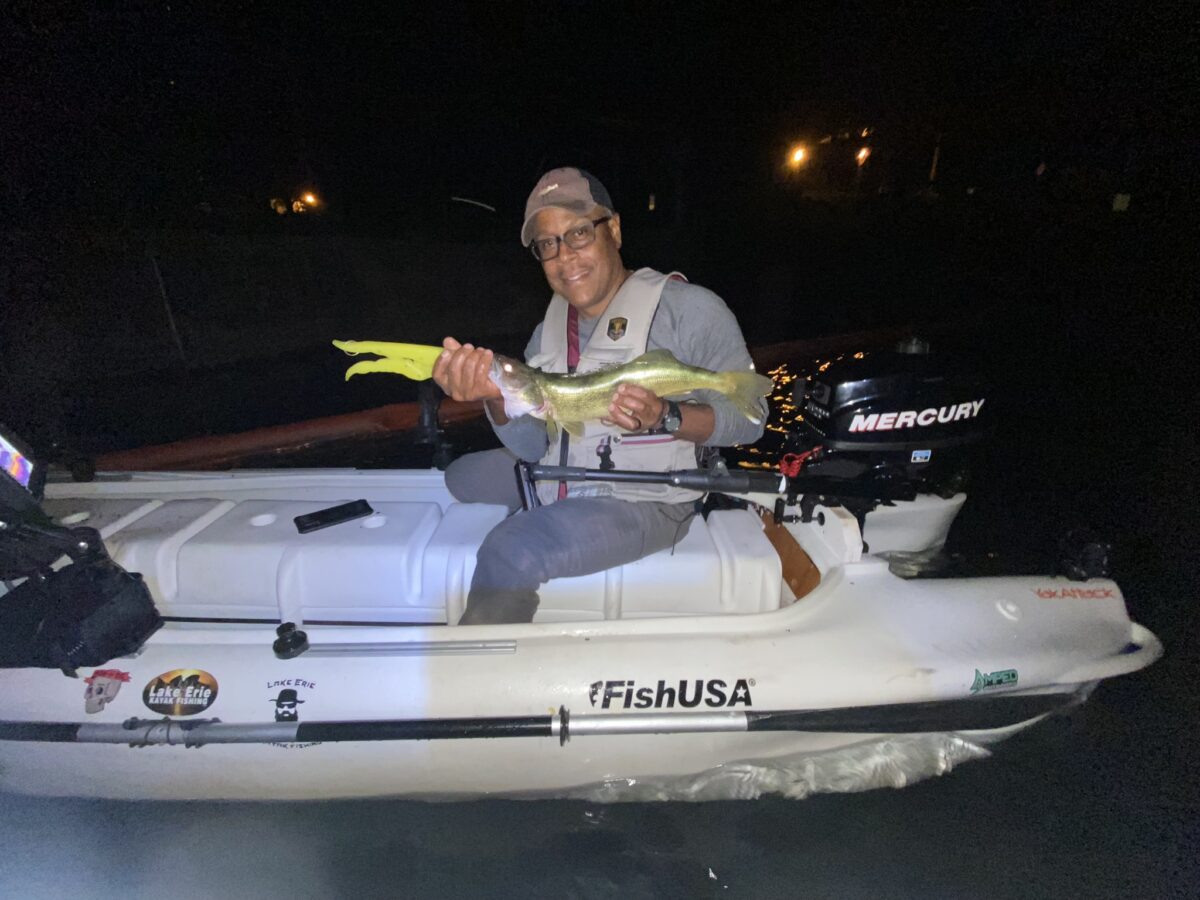Fishing kayaks have become a permanent feature of ponds, lakes, rivers, and estuaries, typically in the southern parts of this country, and although kayak fishing stopped growing as a sport years ago, it is practiced by thousands of anglers, of which many believe that the fact that fishing from a kayak isn’t easy to say the least, makes them an elite group of anglers.
There also are many anglers who are looking to start fishing from a kayak, and they are considering both advantages and disadvantages of doing so.
This article is for them –
So how hard is it to fish from a kayak, really?
The answer depends on who’s asking –
If you’re young and in good physical shape, and you fish flat, protected water, and you don’t have to paddle or pedal long distances to get to your favorite fishing ground (and back from it…), it could make sense for you to try kayak fishing, and see if you’re capable of adapting to this very demanding and often unrewarding sport.
But if you’re middle aged or older, and/or not in good shape, kayak fishing is likely to prove to be too hard for you, for multiple reasons, most of them are related to safety, and to kayaks’ poor ergonomics –
Safety first
Most boating accidents in the US happen to people in small vessels, and kayaks (and canoes) are the smallest vessels out there.
On top of this basic statistical fact, most kayaks are human powered, and not equipped even with an auxiliary motor, such as a trolling motor. This means that in real-world terms, these kayaks are seriously under-powered, and their users can easily drift away in unwanted directions, or be prevented from finding their way back to where they started their fishing trip due to fatigue, coupled with unfavorable wind and/or currents and/or waves.
Kayaks are notoriously unstable
Except for the W700 catamaran kayak-skiff, even the biggest and widest fishing kayaks on the market are not stable enough to guarantee that the anglers who stand on them would be able to keep standing if something unexpectedly destabilizes them. It can be a motorboat’s wake hitting the kayak, a big fish they hooked who’s swimming in the wrong direction, a sudden gust of wind, drifting towards the branches of a tree that’s growing on the bank, hitting a submerged object, or simply losing stability due to a person’s miscalculated movement. Being stable standing up on these inherently unstable vessels is hard, no matter what, and “Stuff Happens” is the rule, not the exception.
Kayaks are notoriously uncomfortable
But if you don’t stand up on your kayak, you’re sitting down on its deck in the L Posture, which is notoriously uncomfortable, and sooner or later leads to back pain and leg numbness. And as much as you love fishing, it’s hard to enjoy it if your legs are numb and your back hurts. Sitting in the L posture is so prone to generating back pain, that it led to the coining of the popular expression “Yak Back”, which means backache.
Yak Back seems to be the primary reason why most people who try kayak fishing end up quitting it. You can settle for a limited range of travel and limited choices in terms of fishing grounds, and you can accept the fact that you can’t fish standing up, but fishing while being in pain is too hard, and it defeats the purpose of having fun. And by the way, back pain is the number one source of disability for American adults.
Practical considerations
On top of the above mentioned considerations, kayak fishing is exceptionally hard compared to fishing from skiffs and boats due to the combination of sub-optimal fishing posture and the small area of the deck that the angler can reach.
Landing a fish in the deck space between one’s legs is not easy, and not exactly where you’d prefer to deal with a fish, especially if it’s big and powerful.
Reaching for fishing gear stored in various parts of the kayak’s deck is hard, and sometimes even impossible, which is most inconvenient.
The same is true for motorizing SOT kayaks, since in most cases their motor is stern mounted, and the back tip of a conventional kayak (not in the W700) is several feet behind the driver’s seat, which is too far.
Bottom line
If you’re attracted by the low cost, portability, low maintenance, and shallow water capabilities of fishing kayaks, but you’re deterred by the fact that fishing from a kayak is too hard and unsafe, you may want to take a look at the Wavewalk 700 catamaran kayak (W700), which offers all these advantages that other kayaks offer, without any of the hardships and inconveniences that come with them.
And if you’re attracted by the W700 kayak-skiff idea, and you’d like to take it even further in terms of performance, seaworthiness and comfort, you’re looking at the S4 cartop microskiff (seen in the picture above).
Do you have any questions for us?


